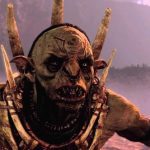 Politics
Politics  Politics
Politics  Weird Stuff
Weird Stuff Ten Bizarre Facts About The Doge Meme
 Our World
Our World 10 Ways Your Christmas Tree Is More Lit Than You Think
 Movies and TV
Movies and TV The 10 Coolest Stars to Set Sail on The Love Boat
 History
History 10 Things You Didn’t Know About the American National Anthem
 Technology
Technology Top 10 Everyday Tech Buzzwords That Hide a Darker Past
 Humans
Humans 10 Everyday Human Behaviors That Are Actually Survival Instincts
 Animals
Animals 10 Animals That Humiliated and Harmed Historical Leaders
 History
History 10 Most Influential Protests in Modern History
 Creepy
Creepy 10 More Representations of Death from Myth, Legend, and Folktale
 Politics
Politics 10 Political Scandals That Sent Crowds Into the Streets
 Weird Stuff
Weird Stuff Ten Bizarre Facts About The Doge Meme
 Our World
Our World 10 Ways Your Christmas Tree Is More Lit Than You Think
Who's Behind Listverse?

Jamie Frater
Head Editor
Jamie founded Listverse due to an insatiable desire to share fascinating, obscure, and bizarre facts. He has been a guest speaker on numerous national radio and television stations and is a five time published author.
More About Us Movies and TV
Movies and TV The 10 Coolest Stars to Set Sail on The Love Boat
 History
History 10 Things You Didn’t Know About the American National Anthem
 Technology
Technology Top 10 Everyday Tech Buzzwords That Hide a Darker Past
 Humans
Humans 10 Everyday Human Behaviors That Are Actually Survival Instincts
 Animals
Animals 10 Animals That Humiliated and Harmed Historical Leaders
 History
History 10 Most Influential Protests in Modern History
 Creepy
Creepy 10 More Representations of Death from Myth, Legend, and Folktale
10 Game Characters Everyone Hated Playing
Most games make their heroes obvious. They let players control a single character over the course of the adventure. Sure, that formula is predictable, but it leaves ample room to grow that character and develop their respective arc. However, not all games follow that structure.
Some titles include extra characters to play around with, which can quickly go sideways. Variety is the spice of life, but dividing development between multiple protagonists is rarely a good idea. Many of these alternate heroes feel half-baked—both in functionality and their place within the story. The creators add them for novelty’s sake with little thought for how they mix with the rest of the game. That mindset can lead to several lackluster levels, dragging down the whole ordeal. By the end, you wish these new faces never existed.
Related: Top 10 Quirky Facts And Stories From The World Of Gaming
10 Clank
With a series called Ratchet & Clank, you’d naturally expect the little robot to have some role. He mainly functions as a source of info and a hover pack to help Ratchet glide, but those functions apparently aren’t enough. You occasionally control Clank as he enters a vent or another small space. He then engages in his own platforming and puzzle-solving, facilitated by commanding other robots. That sounds more engaging than it is.
Clank’s levels feel like toddler versions of Ratchet’s. The puzzles are rudimentary at best, and the platforming often hinges on them. Though the concept of controlling lesser bots might be intriguing, the execution is far too stilted. What makes these levels more egregious is the fact that they’ve been here since the beginning. Developer Insomniac stubbornly refuses to eliminate them. In fact, they’ve only gotten longer. Before you ask, no, the sidekick’s solo game doesn’t fix these problems. Secret Agent Clank still languishes in mediocrity. That’s one area where rival series Jak & Daxter comes out on top.[1]
9 Big the Cat
As the Sonic series has gone on, the Sega and Sonic Team have added more and more characters to play with. One furry friend with an almost universal hatred is Big the Cat. This feckless feline debuts in Sonic Adventure. He’s looking for his friend, Froggy, but his method of doing that is to go fishing. Yes, really.
Big’s levels consist of casting your line and waiting for a bite. Plenty of games offer fishing as a side activity, but they rarely make it a requirement for progressing. Not to mention, such a slow pursuit is utterly out of place in a Sonic game. This series is all about speed, so a stagnant minigame kills the momentum. At least the creators realized their mistake. Sonic Heroes makes Big into a powerhouse fighter akin to Knuckles, meaning much less boredom.[2]
8 Mary Jane Watson
Insomniac has a problem: The developers burden their otherwise accomplished games with the pace-breaking boredom of terrible minigames and extra characters. The worst examples are easily their Spider-Man titles. These games periodically pause their web-slinging fun to focus on the hero’s love interest, Mary Jane. Reimagined here as a poor man’s Lois Lane, the rambunctious redhead puts herself in the most dangerous situations possible to get a good story. Her predictable peril gives both Spider-Man and the player a royal headache.
MJ’s sections are as annoying as they are contrived. The story goes to increasingly desperate lengths to force her into the plot, practically shoving her down your throat. The gameplay does nothing to justify that effort, as the shallow stealth system leaves no room for variety or experimentation. You trigger specific distractions and stun predetermined foes to clear a path to the objective.
This brain-dead exercise breaks the pace, and that sensation grows as the levels get longer in the sequel. In short, MJ’s wannabe heroics are unnecessary, unwanted, and unforgivable.[3]
7 Silver the Hedgehog
Sonic fans hate Big’s fishing minigame, but he’s just a small portion of a much larger adventure. Ironically, the series’ fifteenth anniversary houses a worse offender. 2006’s Sonic the Hedgehog introduces a time-travelling twit named Silver. His psychic powers let him levitate and telekinetically toss objects at enemies. That sounds like a blast, but it’s anything but. Aiming the psychic throws is nearly impossible to do with any precision, and the levitation doesn’t enhance the platforming due to the slow speed and slippery controls. These flaws are frustrating enough in small doses.
Unfortunately, you play as Silver for a third of the whole game. The story unfolds from the perspectives of three hedgehogs: Sonic, Shadow, and Silver. Thus, you must contend with these clunky mechanics for hours on end. In addition, Silver’s aforementioned speed (or lack thereof) contrasts wildly with his peers and makes traversing the needlessly huge hub worlds an utter chore. It’s no wonder this futuristic failure has faded from the franchise.[4]
6 Atreus
2018’s God of War heavily foreshadows Kratos passing the torch to his son, Atreus, so it’s not surprising that players control the kid for certain parts of the sequel. Sadly, God of War: Ragnarok fumbles the ball in setting him up as a successor. He has a fraction of his dad’s moves and equipment, and his small frame means he can only take a few hits before dying. That must mean he’s light on his feet, right? Well, the camera remains way too close to the action, so dodging is easier said than done. However, that’s nothing compared with what he does to the narrative.
Atreus destroys any illusion of freedom. His segments are the epitome of linearity, guiding players through narrow pathways with no exploration. You move forward while other characters spout exposition. That’s laughably ironic, considering these episodes often focus on menial tasks over narrative significance. The worst example comes when Atreus spends three hours helping a girl with her daily chores in Jötunheim. This aside takes the glacial tale and grinds it to a halt. If these instances are indicative of the future, then this series is in trouble.[5]
5 Desmond Miles
The modern-day sections have always been the weakest link in Assassin’s Creed. That’s especially true in the earlier entries, which desperately try to make Desmond Miles seem more important than he really is. This unassuming bartender is the latest in a long line of killers. Both the Assassins and the Templars want him to unlock pivotal secrets of the past. Little do they know that his destiny is just glorified maintenance.
Desmond’s gameplay boils down to flipping switches and solving pathetic puzzles. These tedious tasks frequently interrupt the open-world historical adventures and intense period drama. Even when the hero starts going on more action-based missions, they’re nowhere near as dynamic as his ancestors’ exploits, thanks to his limited skills. At least later games make the modern portions brief and/or optional. Sadly, the early entries constantly break the immersion, causing fans’ eyes to roll whenever they’re pulled out of the time-bending sim.[6]
4 Sherry Birkin
The early Resident Evil entries make zombies a genuine threat, but the protagonists can still fight back. That’s not the case for Sherry. Resident Evil 2 (both the original and the remake) places players in this little girl’s shoes as she flees from the maniacal police chief, Brian Irons. It’s an easy way to churn up cheap thrills.
These sections fall flat for many of the same reasons as MJ’s segments. They consist of basic, on-rails stealth where all you can do is hide behind boxes and distract the bad guy. The game also makes you go back and forth to fetch key items required for progression. You wonder why the developers force you to put up with this nonsense. Claire Redfield or Leon Kennedy could easily take down Irons in two seconds. In fact, Sherry does this herself via her G embryo, thereby making all that aggravation utterly pointless.[7]
3 Blink the Mole
The Spyro games have a decent track record with their playable characters, so Blink is an unfortunate aberration. This mole debuts in A Hero’s Tail, where he searches for dark gems in various underground caverns. He relies on his trusty laser and old-fashioned fisticuffs to counter the creatures he finds down here. These levels should be straightforward.
Nevertheless, the developers mess them up in every conceivable way. Simple climbing and platforming are needlessly difficult due to how heavy Blink feels. His laser and melee attacks should offer dynamic combat, but their unwieldy nature makes them unreliable. They sometimes struggle to take out a single enemy. These levels feel like a hodgepodge of disparate elements, none of which mesh well. Who knew this mole could leave such a terrible first impression on Spyro fans?[8]
2 Taiga Saejima
To be fair, Saejima plays as well as any character in the Yakuza: Like a Dragon series. He hits like a truck with intuitive combos and devastating throws. His sheer power demolishes even the toughest bosses. So, what’s the problem?
Well, Taiga Saejima is a wanted man. When players control him in Yakuza 4 and 5, he’s an escaped fugitive. The big guy can’t freely explore Japan like his peers. Instead, he navigates much smaller hubs, with pathways blocked by patrolling cops or invisible walls. Often, the only means of evading the law is the confusing network of underground tunnels, condemned buildings, and high rooftops. These obstacles mean that simple movement is more convoluted than it needs to be. Plus, such restrictions run counter to the franchise’s inherent freedom. It’s tough to truly enjoy a sandbox when you’re so boxed in.[9]
1 Abby
Who thought this would go over well? The Last of Us Part II introduces a musclebound woman named Abby, who proceeds to torture and execute the first game’s protagonist, Joel. She does so in revenge for him killing her father, but that doesn’t change the fact that fans had grown attached to Joel. Despite that, the narrative switches perspectives to Abby and her friends for virtually the whole second half. It essentially starts from scratch with a group of one-note characters whom you don’t give a lick about. Abby herself is insufferably obnoxious; you lament being stuck with her for hours on end.
Not to mention, this swap kills the pacing of a game already too bloated for its own good. It’s all to peddle a pretentious plot about the futility of revenge. The story is theoretically the main draw, but it boils down to meandering cutscenes rife with clunky lines and awkward pauses. Rather than being profound, it’s just desperate and stupid. The same goes for the gameplay.
Abby’s musclehead appearance is completely nonsensical. Not only is it tough to imagine her maintaining this physique in a post-apocalyptic future, but the resulting gameplay also undermines the supposed danger. She just runs up and punches infected creatures into submission. That image is unintentionally hilarious. It also saps what little depth these linear games have in their progression. Moreover, it undermines the zombie hordes as a threat, affecting the overall world-building. To many fans, Abby represents the downfall of a once-beloved IP.[10]








